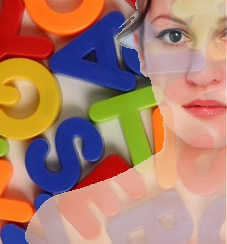Mar 7 2005
 Although they are dramatically different, words and faces are both recognized by parts, according to a study published in February in the Journal of Vision, an online, free access publication of the Association for Research in Vision and Ophthalmology (ARVO).
Although they are dramatically different, words and faces are both recognized by parts, according to a study published in February in the Journal of Vision, an online, free access publication of the Association for Research in Vision and Ophthalmology (ARVO).
It has been suggested that faces and words are recognized differently, that faces are identified by wholes, whereas words and other objects are identified by parts. However, Marialuisa Martelli, Najib Majaj, and Denis Pelli, three neuroscientists from New York University, conducted a study that finds individuals use letters to recognize words and facial features to recognize faces.
To reach this finding, experiments were performed in which observers were asked to focus on a black dot, to the right of which was a letter. To the left of the dot was a three-letter word in which the letter to the right was in the middle of that word. The visual experiments also involved manipulated faces and facial features. In this case, observers would focus on a black dot. To the dot's right were lips that were fat or thin, or smiling or frowning. To the left of the dot was an entire face.
When the words to the left were spaced normally and the face was of normal proportions, subjects had a great deal of difficulty identifying out of their peripheral vision the letter and the characteristics of the lips. Pelli concludes that context hinders identification and crowds what is to be identified.
In a second experiment, the observers were presented with a context that proved to make recognition easier. Where letter identification was involved, the letters comprising the word to the left of the dot were spread out. When faces were involved, the facial features similarly were spread apart. In this experiment, subjects found naming the letter and recognizing the type of lips to the dot's right far easier. In this case, Pelli notes, to recognize a word or face, each letter or facial feature must be isolated from the rest.
"These measures appear to be identifying what kind of computation is performed by the brain in doing this," says Pelli. The brain, he says, is recognizing these objects by parts, not as wholes. Our visual system recognizes "bite-sized pieces" of our world, and our brain assembles them into the perceptual objects that constitute our environment.